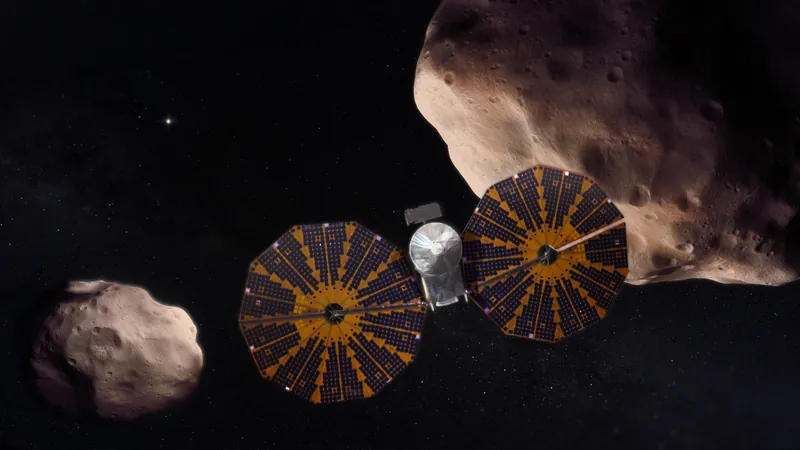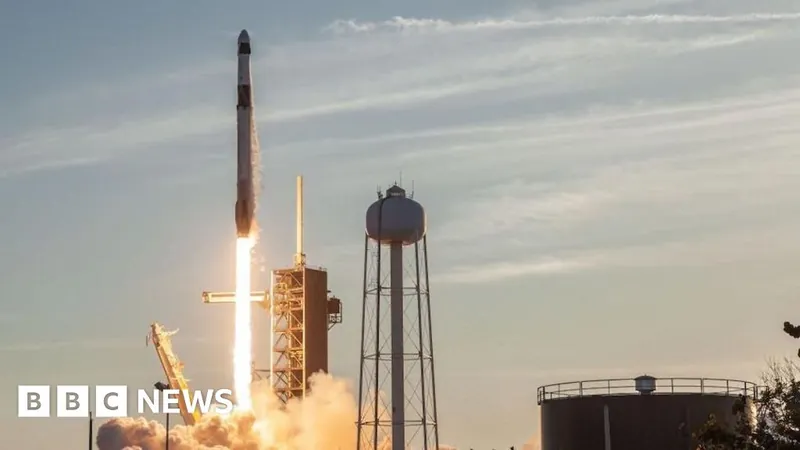
NASA's Lucy Mission: Unlocking Secrets of Asteroids and Planetary Origins
2025-05-06
Author: John Tan
A Golden Age of Asteroid Exploration
The NASA Lucy spacecraft has taken a giant leap in our understanding of the cosmos, recently flying by the main belt asteroid named Donaldjohanson. At the Southwest Research Institute in Boulder, Colorado, Hal Levison, the mission's principal investigator, has revealed intriguing insights from this encounter.
Asteroids as Fossils of Planet Formation
Levison stated that asteroids like Donaldjohanson are essentially time capsules, offering clues about the early formation of planets. "Each one is a little experiment, providing critical data to help us piece together how planetary bodies accumulate," he explained.
The Name Behind the Rock
Asteroid 52246 Donaldjohanson is named in honor of the famed paleoanthropologist who discovered the iconic 'Lucy' hominid fossil in Ethiopia in 1974. This connection adds a layer of historic significance to the mission.
Lucy’s Epic Journey
Launched on October 16, 2021, Lucy is embarking on a staggering 4-billion-mile journey over 12 years to explore 11 asteroids. The spacecraft's flyby of Donaldjohanson serves as a precursor to its ambitious mission to venture into the intriguing Trojan asteroids of Jupiter from April 2027 to March 2033.
Surprises Along the Way
In November 2023, Lucy passed another asteroid, Dinkinesh, unveiling unexpected features, including a bizarre contact binary structure known as Selam. "Sometimes our initial hypotheses are wrong, as was the case with Dinkinesh, which turned out to be far more fascinating than we anticipated," Levison admitted.
Unraveling Mysteries
While Donaldjohanson's shape aligns with prior predictions, the details captured by Lucy remain perplexing. Described as resembling two ice cream cones fused together, Levison believes its unusual configuration could reshape our understanding of how such celestial bodies form.
Understanding Collisions
Simone Marchi, the deputy principal investigator, noted that Donaldjohanson is likely a remnant of a larger collision. "These two fragments came together at a very slow speed, creating this unique shape. Our data points to multiple theories with exciting implications for future research," she added.
An Era of Discovery
NASA's Thomas Statler emphasizes this moment as a transformative period in asteroid exploration. "We're gathering insights from the very building blocks of our solar system," he remarked, highlighting the ongoing quest to understand the origins of Earth and its environment.
Innovations Behind Lucy
Lockheed Martin played a crucial role in designing the mission, ensuring the spacecraft’s trajectory includes three close Earth flybys for optimal asteroid encounters. The innovative use of large solar arrays helps Lucy operate efficiently in the distant solar system.
A Lasting Message
After its scheduled encounters with the Trojan asteroids, Lucy may continue its mission, potentially offering future scientists insights for millions of years to come. This mission includes a time capsule-like plaque containing messages, even quotes from The Beatles, aimed at future generations rather than extraterrestrial life.
"This serves as a bridge from our era to those who might discover Lucy in the distant future," Levison mused, pointing out its historical significance as it floats on an orbit between Earth and the Trojan asteroids for two million years.


 Brasil (PT)
Brasil (PT)
 Canada (EN)
Canada (EN)
 Chile (ES)
Chile (ES)
 Česko (CS)
Česko (CS)
 대한민국 (KO)
대한민국 (KO)
 España (ES)
España (ES)
 France (FR)
France (FR)
 Hong Kong (EN)
Hong Kong (EN)
 Italia (IT)
Italia (IT)
 日本 (JA)
日本 (JA)
 Magyarország (HU)
Magyarország (HU)
 Norge (NO)
Norge (NO)
 Polska (PL)
Polska (PL)
 Schweiz (DE)
Schweiz (DE)
 Singapore (EN)
Singapore (EN)
 Sverige (SV)
Sverige (SV)
 Suomi (FI)
Suomi (FI)
 Türkiye (TR)
Türkiye (TR)
 الإمارات العربية المتحدة (AR)
الإمارات العربية المتحدة (AR)